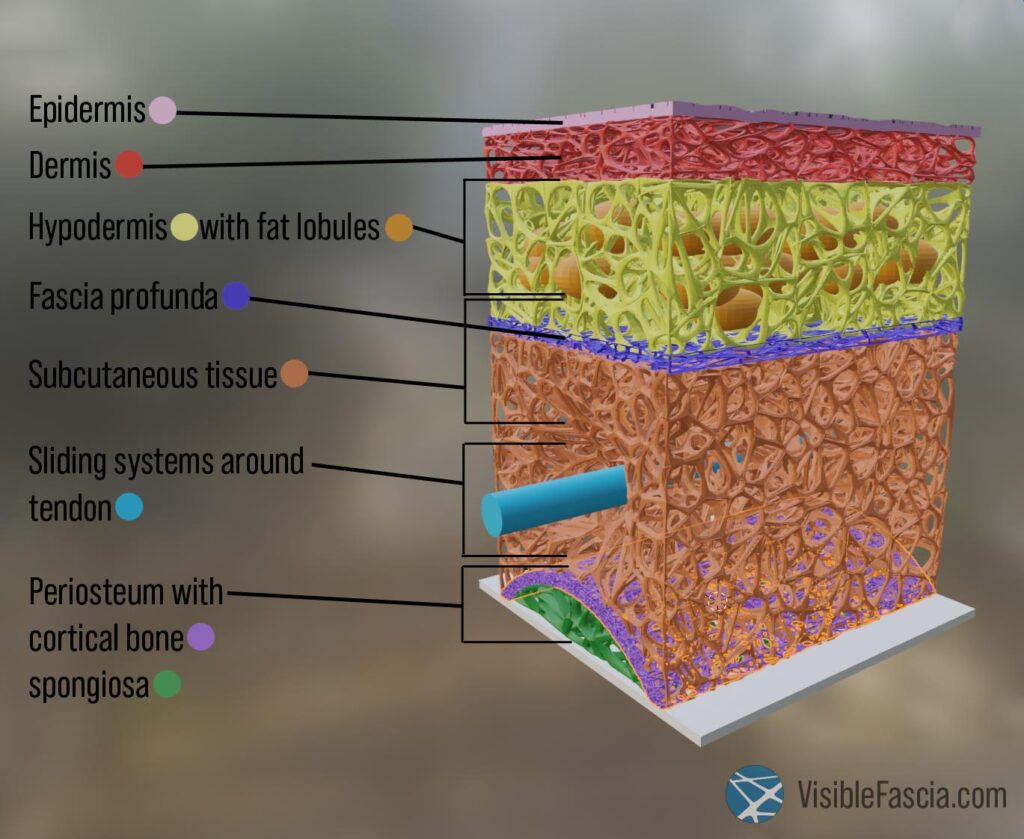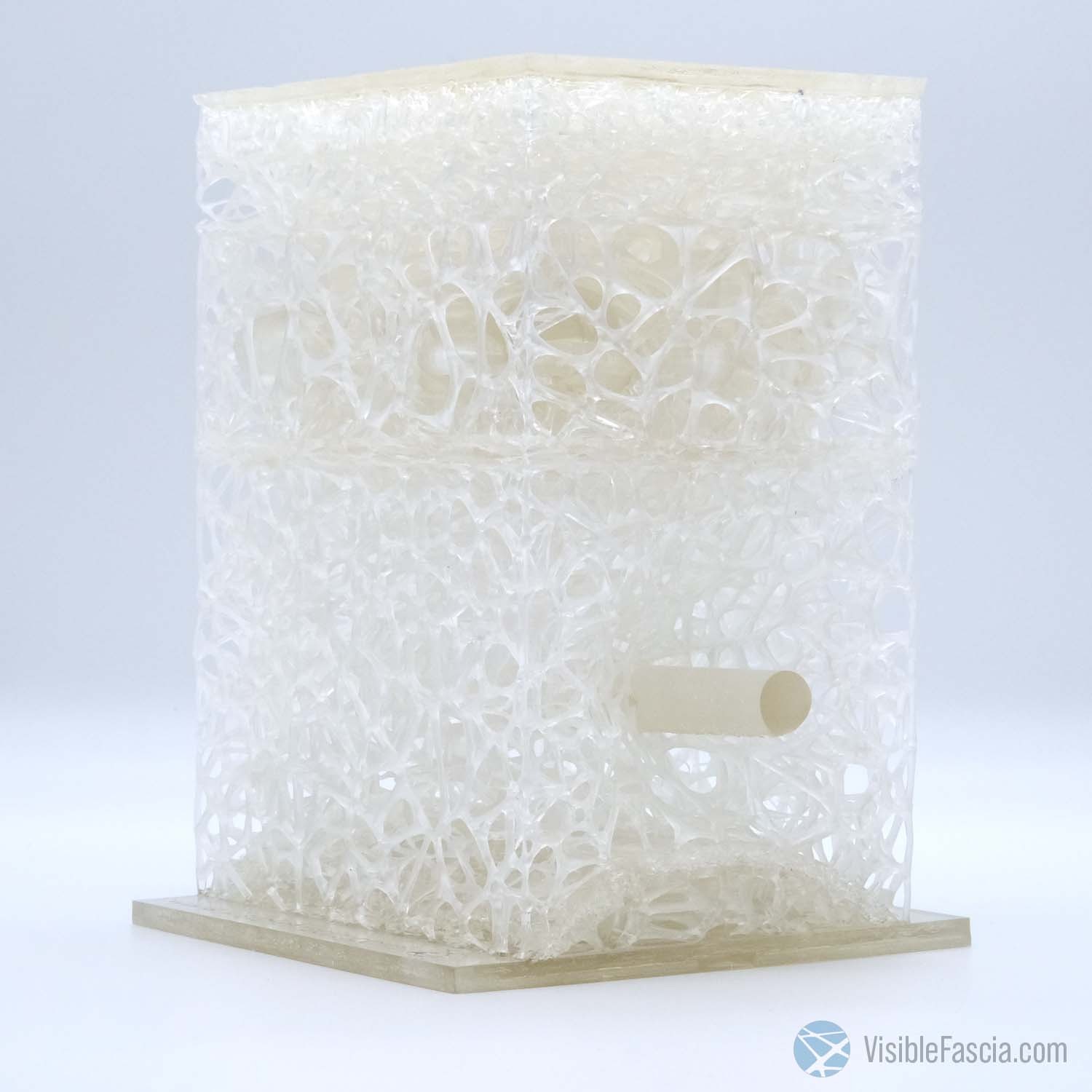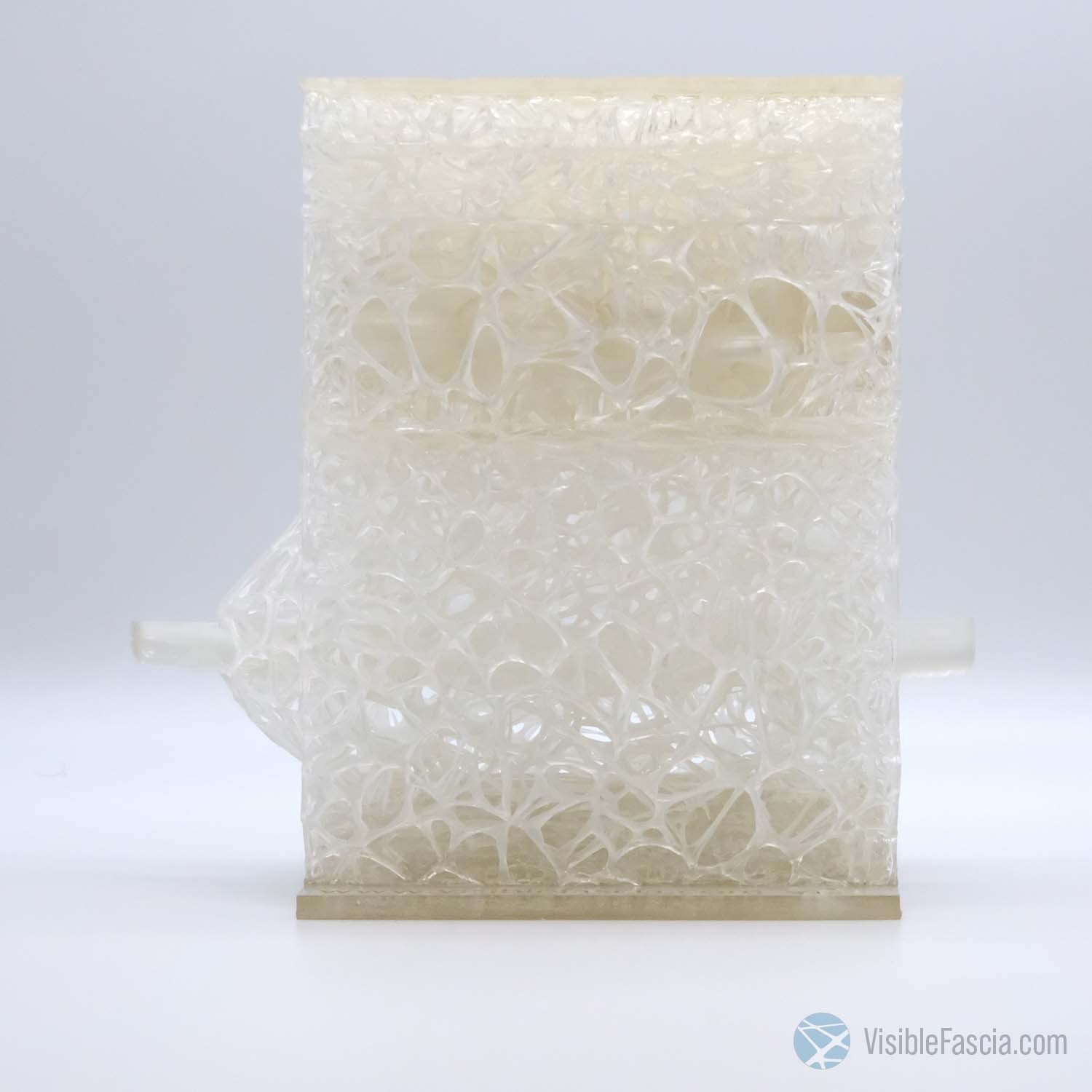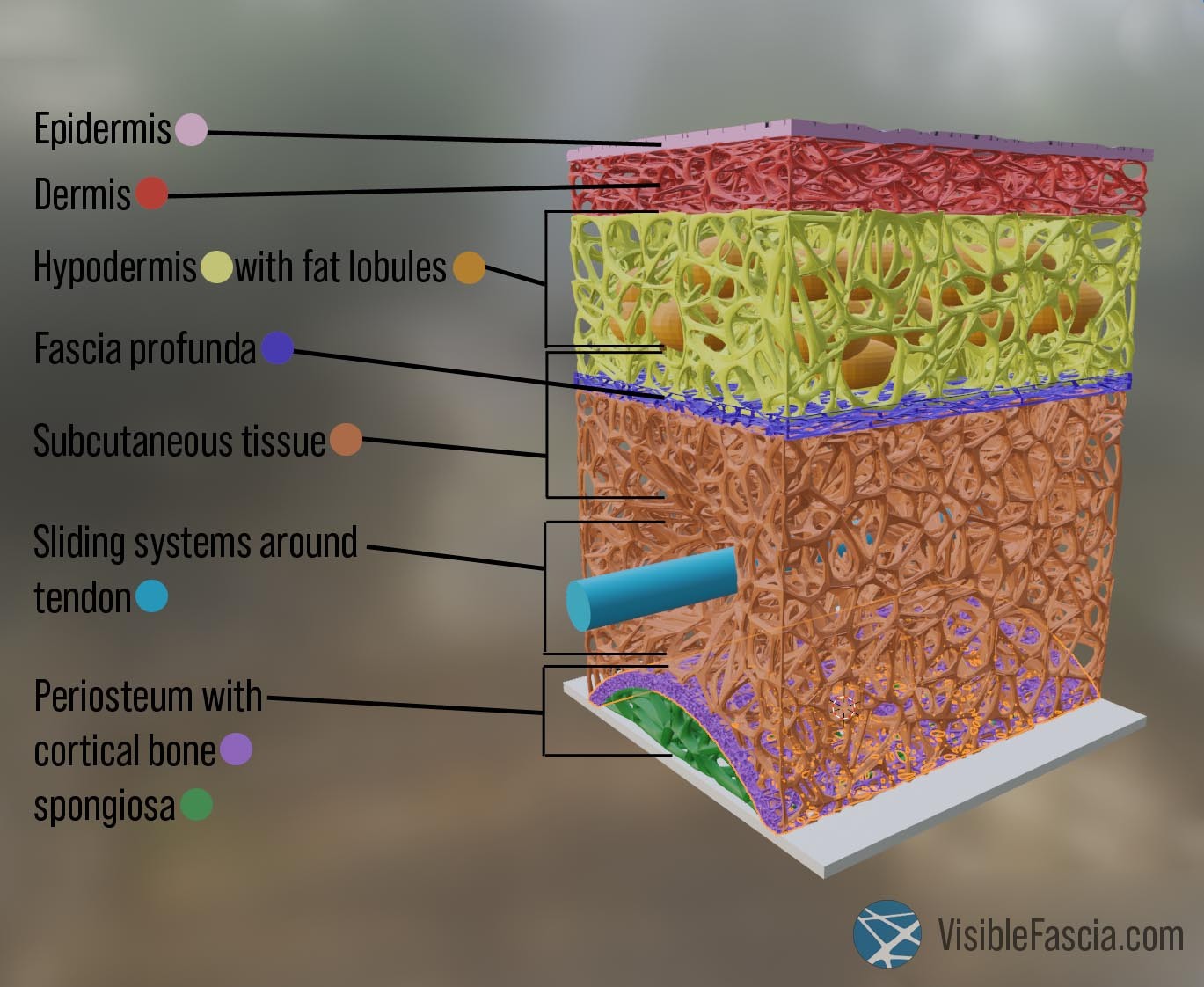A complex 3D printed model of the connective tissue network, showcasing the fibrillar continuity from the skin to the bone.
Details:
- Dimensions: 180 x 120 x 166 mm
- weight: around 530 gr
- Material: environmentally friendly resin
- color: translucent
Description:
It is based on the groundbreaking work of Jean-Claude Guimberteau, this model provides a visual representation of the fascial network in the human body.
The model is manufactured on-demand and made from a special, environmentally-friendly resin derived from soy oil, making it biodegradable.
It weighs around 530g and measures 180 x 120 x 166mm, with a translucent finish that closely resembles the color of fascia in vivo. Please note that the resin is UV-sensitive and should not be left outside or exposed to excessive sunlight.
One of the key features of this model is that it represents a visualization on how the fibers of the fascia extend from the bone to the skin, with each layer encompassing all other structures. When examining the printed model, it becomes clear how difficult it is to distinguish between these layers, as they are all part of one inseparable whole.
It is important to note that each model may have slight distinctions and minor imperfections due to the manufacturing process. However, these do not affect the aesthetics or function of the model and are completely normal.
This model is recommended to healthcare professionals, including therapists, doctors, physiotherapists, sports or yoga teachers, and anyone in the health and fitness profession. It provides a tangible representation of how the fascia extends throughout the body and is essential for proper movement and function.
While the model is not a perfect representation of reality, it breaks down the complex matter in a way that is easy to understand. It is based on the detailed findings of Jean Claude Guimberteau, whose book we highly recommend for those interested in the field.
The fascial system is an extensive and complex network that permeates the body. It incorporates various fibrous connective tissues and structures, including adipose tissue, neurovascular sheaths, joint capsules, ligaments, and tendons, among others. It surrounds, interweaves, and interpenetrates all organs, muscles, bones, and nerve fibers, providing the body with a functional structure that allows all systems to operate in an integrated manner. ( Detailed defintion on fasciaresearchsociety.org)
In summary, this 3D model provides a tangible and detailed representation of the fascial network in the human body, enabling healthcare professionals and enthusiasts to deepen their understanding of this complex matter, leading to better results and increased compliance with therapy or training.

this is a 3d rendering of the actual model with different colors to highlight the different parts of the fascia.
If you have any questions please feel free to ask me.
*the link is an amazon affiliate link






